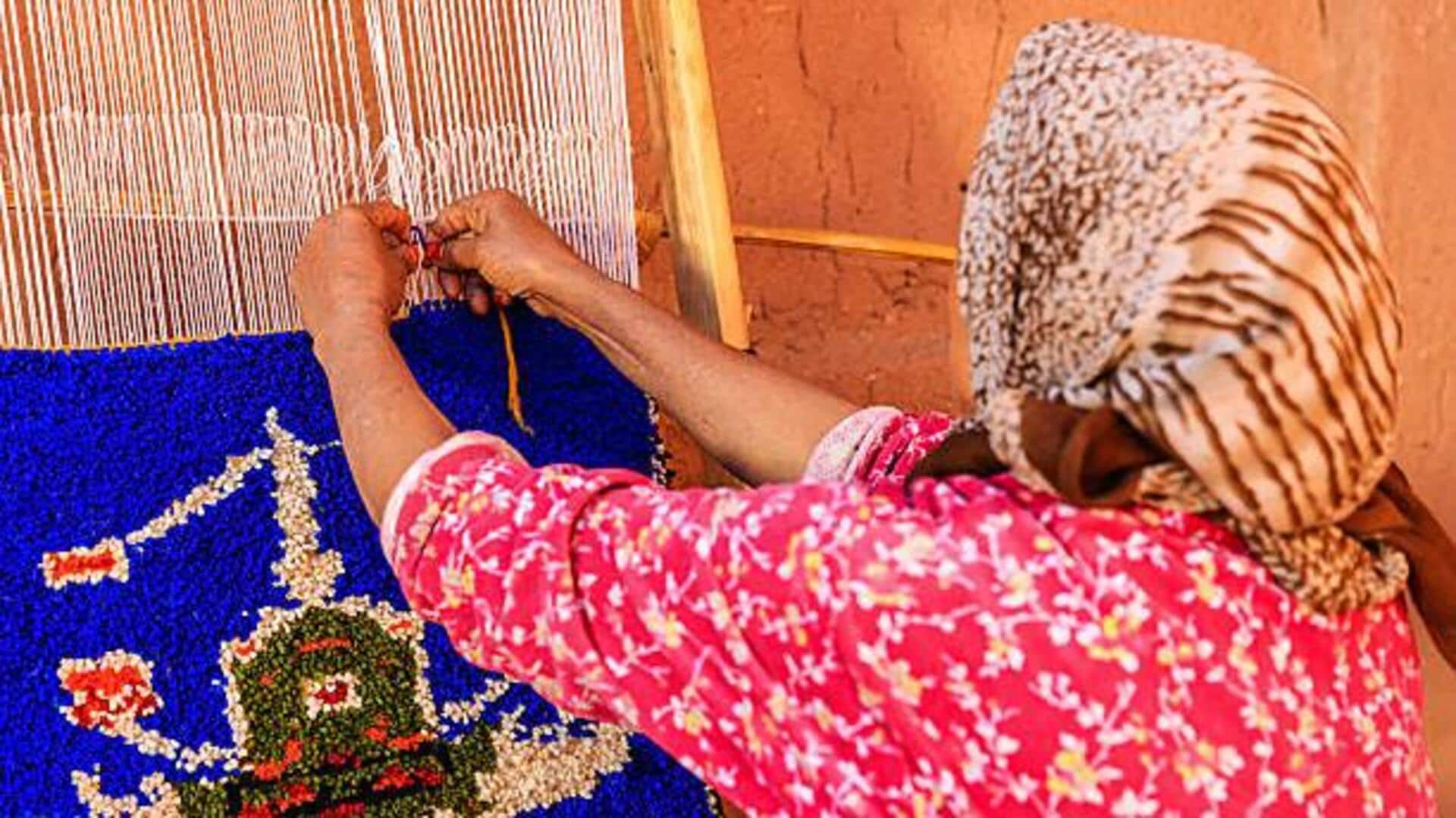
Discover Morocco's carpet-weaving traditions
What's the story
Morocco is famous for its vivid carpet-weaving techniques, a tradition that has been handed down through generations. These carpets are not merely decorative but also a reflection of the rich culture of the region. The intricate designs and bright colors tell stories of the past, highlighting the skills and creativity of Moroccan artisans. Here's a look at the fascinating world of Moroccan carpet-weaving.
Origins
Historical roots of carpet weaving
Carpet-weaving has been a centuries-old tradition in Morocco, influenced by Berber tribes and Arab settlers. Every tribe created its own patterns and styles that reflect their identity and history. The art form grew over centuries, as cultures converged through the trade routes of North Africa. Today, the carpets are a mix of various influences, but still, remain distinctly Moroccan.
Craftsmanship
Techniques used in weaving
Moroccan carpets are intricately hand-woven on traditional looms using age-old techniques. Skilled artisans deftly weave wool or cotton threads into elaborate patterns, commonly incorporating geometric shapes and symbolic motifs. Such a labor-intensive task requires immense precision and patience, making each carpet a unique piece of art. The commitment to preserving these traditional styles is a testament to Morocco's rich cultural heritage.
Symbolism
Cultural significance of carpets
In Moroccan culture, carpets are highly symbolic, frequently decorating homes or gifted for weddings or births. Every pattern woven into the fabric carries a meaning, some designs thought to protect or bring prosperity to the household. Not only do carpets make a beautiful addition to the house, but they also carry deep cultural significance and personal value.
Livelihoods
Economic impact on communities
Carpet-weaving also serves as a means of livelihood for several communities in Morocco. It helps local economies by generating employment for artisans who depend on this craft as their sole source of income. It also draws tourists who want to buy authentic handmade products directly from the weavers themselves.